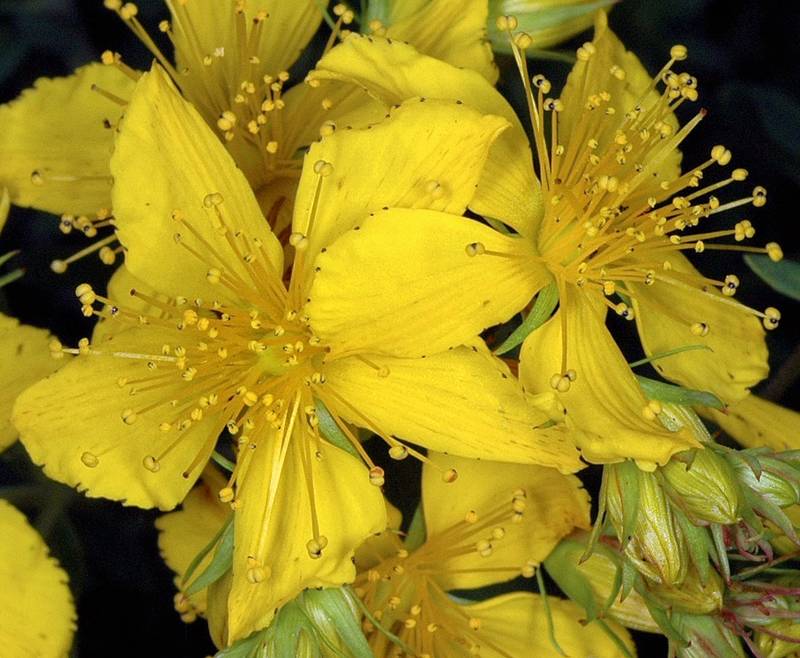Hypericum perforatum
common St. John's-wort, Klamath weed
Leaves opposite, sessile, narrowly spatulate-oblanceolate to lanceolate, 1-3 cm. long, dotted with purplish-black, not clasping, but connected by narrow, wing-like structures at the base.
Inflorescence of large, many-flowered, leafy-bracteate, compound cymes;
sepals 5, lanceolate, acute, 5-7 mm. long;
petals 5, yellow, about twice as long as the sepals, their margins with conspicuous, black spots;
stamens 75-100, attached at the base into 3 distinct groups;
styles 3.
Capsule 5-8 mm. long, 3-celled, acute.
Hypericum perforatum
Occurring on both sides of the Cascades crest in Washington; Alaska to California, east across North America to the Atlantic Coast.


